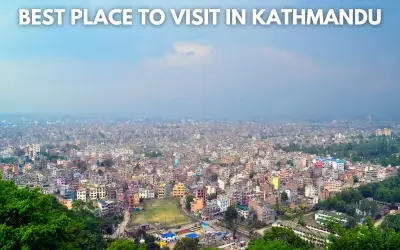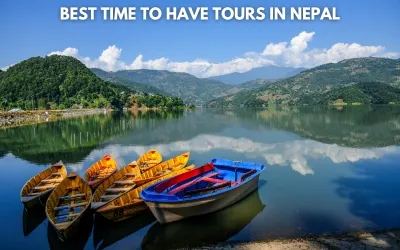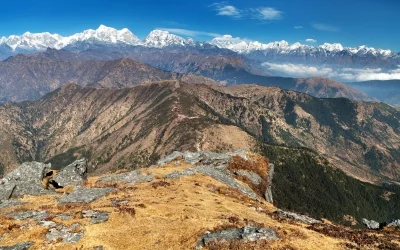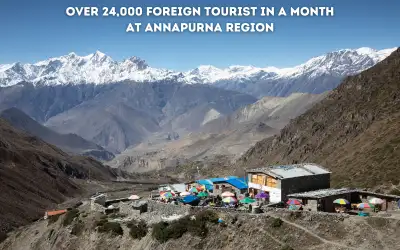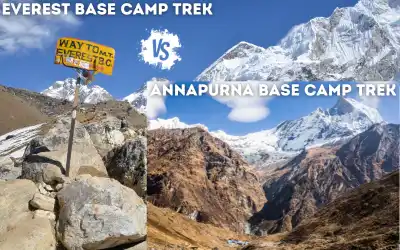Everest Base Camp Trek for Beginner: 8 Tips to Follow
July 25, 2023Everest Base Camp Trek for Beginner
- Everest Base Camp Trek for Beginner
- Everest Base Camp Trek Overview
- 8 Tips for Everest Base Camp Trek
- Facts about Everest Base Camp
- Everest Base Camp Trek Itinerary
- Everest Base Camp Trek Cost
- Difficulties in Everest Base Camp Trek
- Permit Fees in EBC Trek
- Best time to have Everest Base Camp Trek
- Services and Accommodation in EBC Trek
- Packing List for Everest Base Camp Trek
- Final Say on Everest Base Camp Trek for Beginners
Are you a beginner in trekking and looking for ideas to trek at Everest Base Camp? Don’t worry, because we have covered you up. With us, you will get all the tips required to trek to Everest Base Camp.
The Everest Base Camp Trek is one of the most difficult treks in the Everest Region of Nepal. It requires proper planning and physical and mental health to continue this trek. If you are a beginner at trekking but have good physical and mental health, then you can embark on your Everest Base Camp Trek with us.
Blue Lake Adventure is serving packages and trekking guidance to different beginners throughout the world. We have packages specially for you where our guides and representatives will be there every time to help you through your trek.
You can book the Everest Base Camp Trek—14-Day Package with us and enjoy your lifetime experience of trekking in the Everest Region of Nepal without enduring any difficulties.
Everest Base Camp Trek Overview
Everest Base Camp Trek is once in a while a wholesome experience for every trekking enthusiast and nature lover. With the stunning view of Mt. Everest (8848.86m), you can explore the Himalayan region of Nepal.
Every trekker or non-trekker around the world dreams of trekking to Everest Base Camp to explore the beauty of the majestic Himalayas. Not only that, the largest Sherpa civilization is worth a visit. They are full of unique cultures and lifestyles, which attract different visitors to explore and learn more.
The trail to the Everest Base Camp Trek takes you through different lush forests of alpine trees, stunning mountain peaks, Sagarmatha National Park, and the Everest View Hotel. Trekking to Everest Base Camp is a complete package of excitement, thrills, and enjoyment in the Himalayas of Nepal.
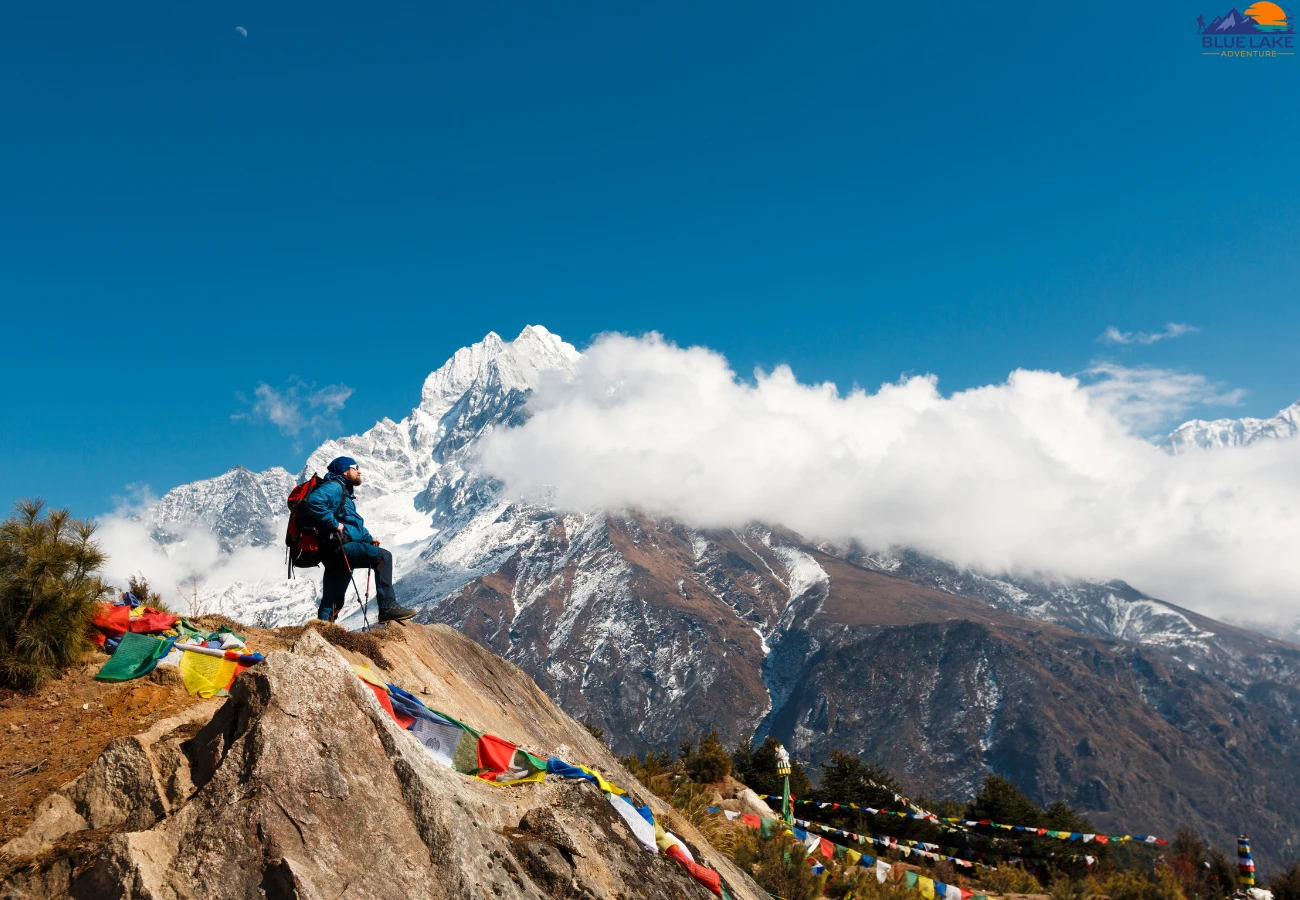
Even if you are a skilled trekker, you still need to be aware of the Himalayan region of Nepal. There are several incidents that have occurred due to unpredictable weather changes in the Everest region.
Whether you are a beginner or a skilled trekker, being cautious on every trail is mandatory and the first thing to remember during the trek to the High Himalayas.
There is a saying, “If you can’t risk, you can’t enjoy your life.” Trekking to Everest Base Camp is the same. There are several risk factors that can cause fatal injuries if neglected. But with our Everest Base Camp for a beginner guide, you can prepare yourself for a thrilling experience on the Everest Base Camp Trek.
You can imagine yourself trekking through the beautiful landscapes of Nepal, sightseeing the majestic mountain peak, and visiting the beautiful Sherpa civilization to reach the foot of the highest peak, Mt. Everest. Isn’t it exciting? It is even exciting to be a beginner and be able to explore so many things just by following some tips.
The Everest Base Camp Trek for beginners is tough because it is located at an elevation of 5,364 m, which is difficult to reach. But with a better trekking agency, fitness, and mindset, you can accomplish the trek.
Talking about the Everest Base Camp, from Day 1 of the trek, you will get to experience the best of the trek. Starting from the scenic flight to Lukla, you will get to enjoy the aerial view of the different districts and lush forests of Nepal.
8 Tips for Everest Base Camp Trek
Reading about the Everest Base Camp, you get the idea of how thrilling this experience is. Setting foot on the lap of the highest peak in the world, even as a beginner in trekking, is definitely the best experience you will ever have.
So, what does it take to trek to Everest Base Camp as a beginner? Find out with us, and build courage inside yourself to embark on the thrilling experience of your life.
Don’t miss out on any of the tips, because every foot in the Everest region should be taken with caution. Below, you can find tips on how to accomplish the trek to Everest Base Camp as a beginner. Excited? If you are, make sure to let us know in the reviews or just by mailing us.
Maintain Physical and Mental Fitness
To trek in the Everest Region of Nepal, having better physical fitness is mandatory. The Everest Base Camp Trek includes hiking for several hours. If you lack physical fitness, then you should start today so you can start trekking sooner or later.
Even if you are a beginner in trekking but have the fitness to hike for several hours, you can trek to Everest Base Camp with ease. To maintain physical health, you can be involved in different exercises like going for a walk, cycling, swimming, jogging, and stair climbing.
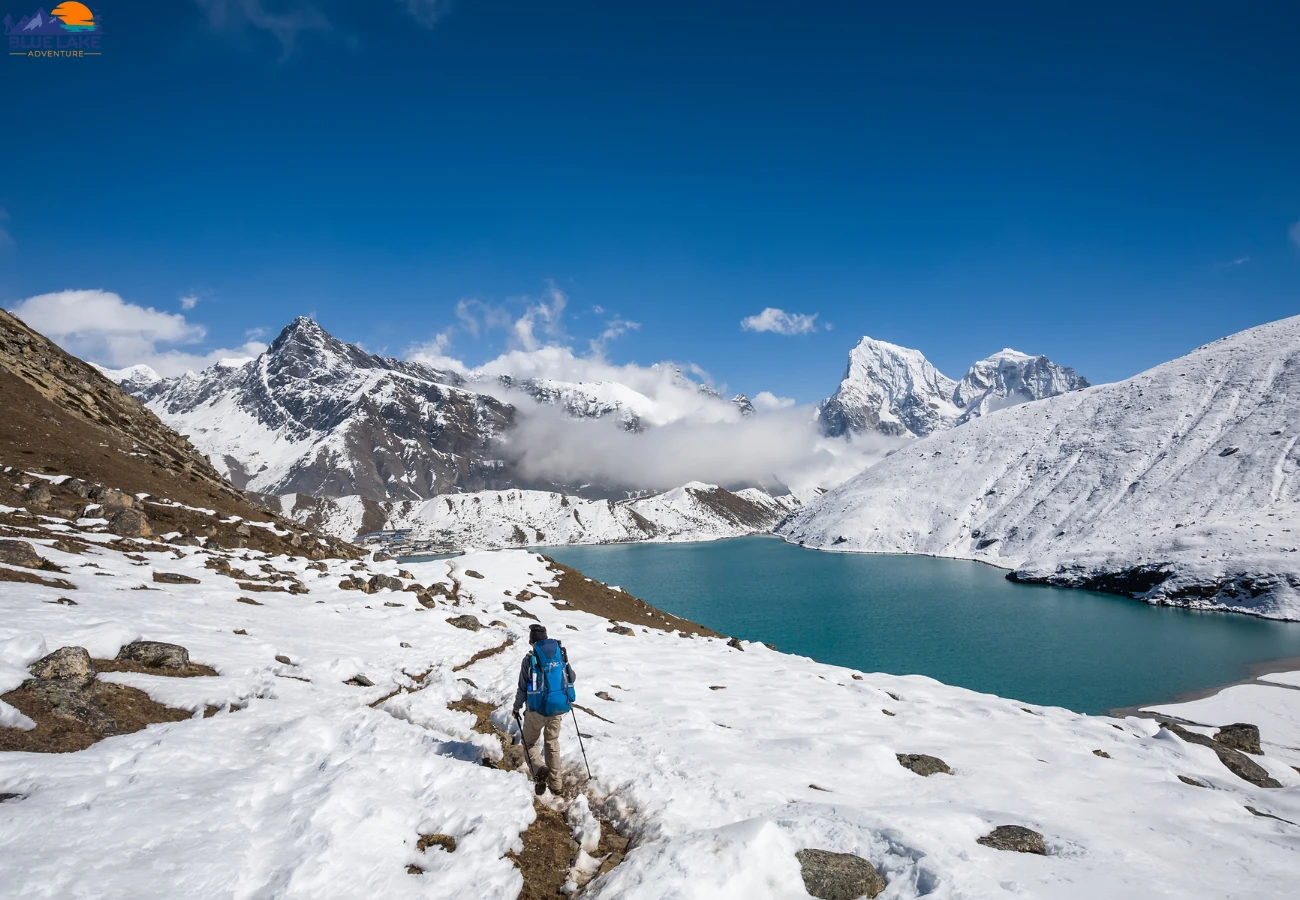
With the exercises, you can maintain your heart health and build some strength in your leg muscles, which is beneficial for hiking on the trails of the Everest Base Camp Trek.
With better physical fitness, mental fitness is also necessary. If you are physically fit but can’t gather the courage to get on the trek, you will miss out on the opportunity to trek to Everest Base Camp.
To have better mental fitness, you can read books on different trekking and traveling experiences, which will motivate you to keep your excitement going. Think about the excitement you will get upon reaching the foot of Mt. Everest. Moreover, motivate yourself to embark on the journey of trekking to EBC.
With better physical fitness and mental fitness, you can get on the trail of the EBC trek and experience what the Everest Base Camp Trek has to offer.
Get reliable and right trekking gear.
Having the right trekking gear is important for the Everest Base Camp Trek. With proper gear, you can ensure your own safety. Your body needs proper gear like hiking shoes, trekking poles, an extra pair of socks, and a tent.
Good hiking shoes that fit you well help you walk through the terrain and ridges and make a grip in the snow to avoid slips. Your feet need warmth during the trek so having a few pairs of woolen socks is recommended.
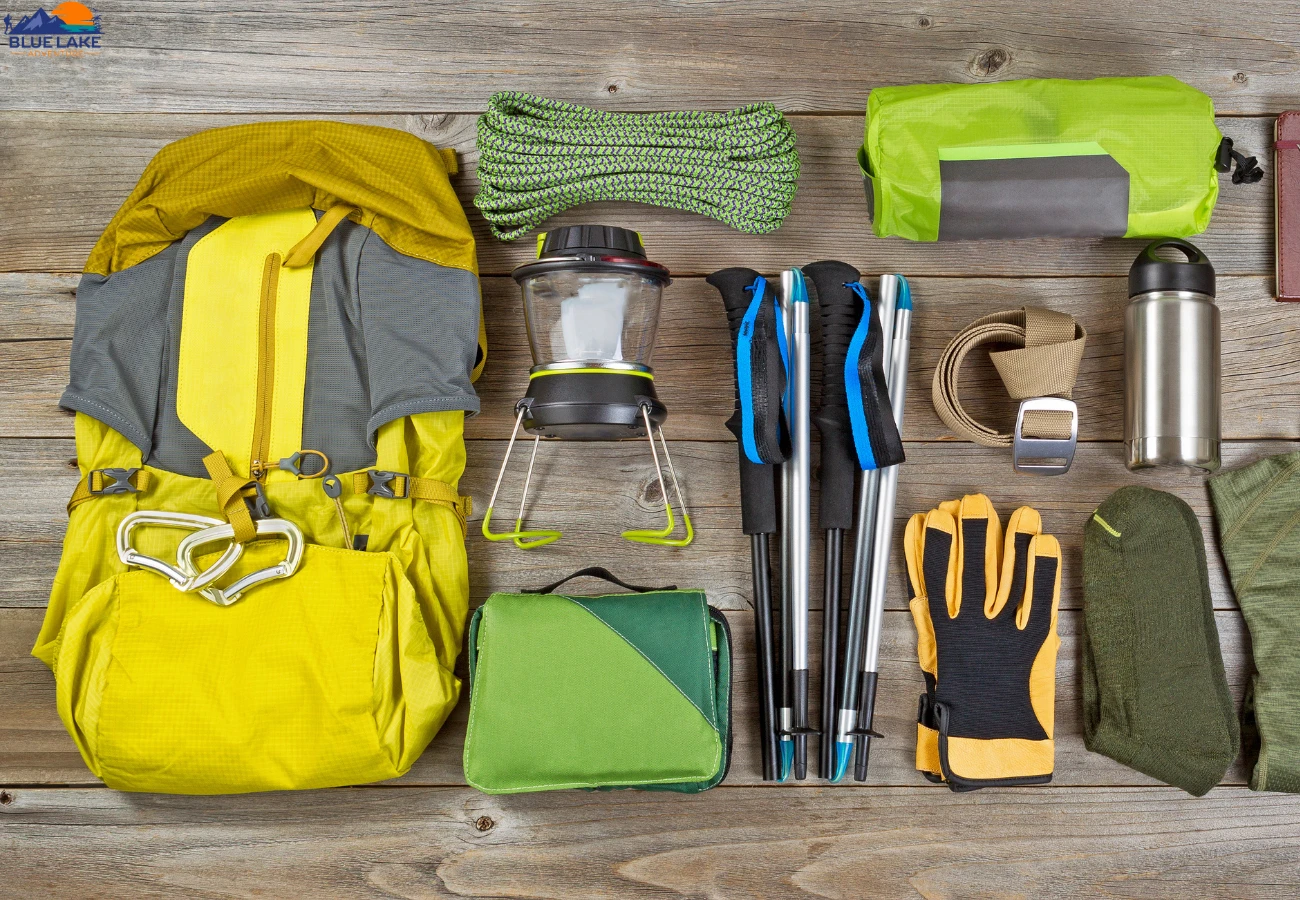
The Everest Base Camp Trek involves walking through the snowy lands so having a trekking pole that can maintain a proper grip is essential. Although the accommodations are mostly in the teahouses or lodges, in rare cases, you might not find a room in the teahouse. In any emergency, having a tent and sleeping bag can be beneficial.
Make sure to check the gear properly before using it to avoid any blisters. Get yourself fresh and reliable gear, not necessarily new, and prepare yourself to experience the majestic beauty of Nepal.
Slowly Acclimatize During the Trek
Proper acclimatization is most common while trekking at higher altitudes. At high altitudes, the oxygen level is comparatively lower than at ground level. Because of the thin air, you might get serious mountain sickness.
To avoid any mountain sickness, proper acclimatization is essential. While trekking, get your body proper rest to be fit in the thin air. With slow acclimatization, your body can adapt to the thin air, making it more comfortable to breathe.
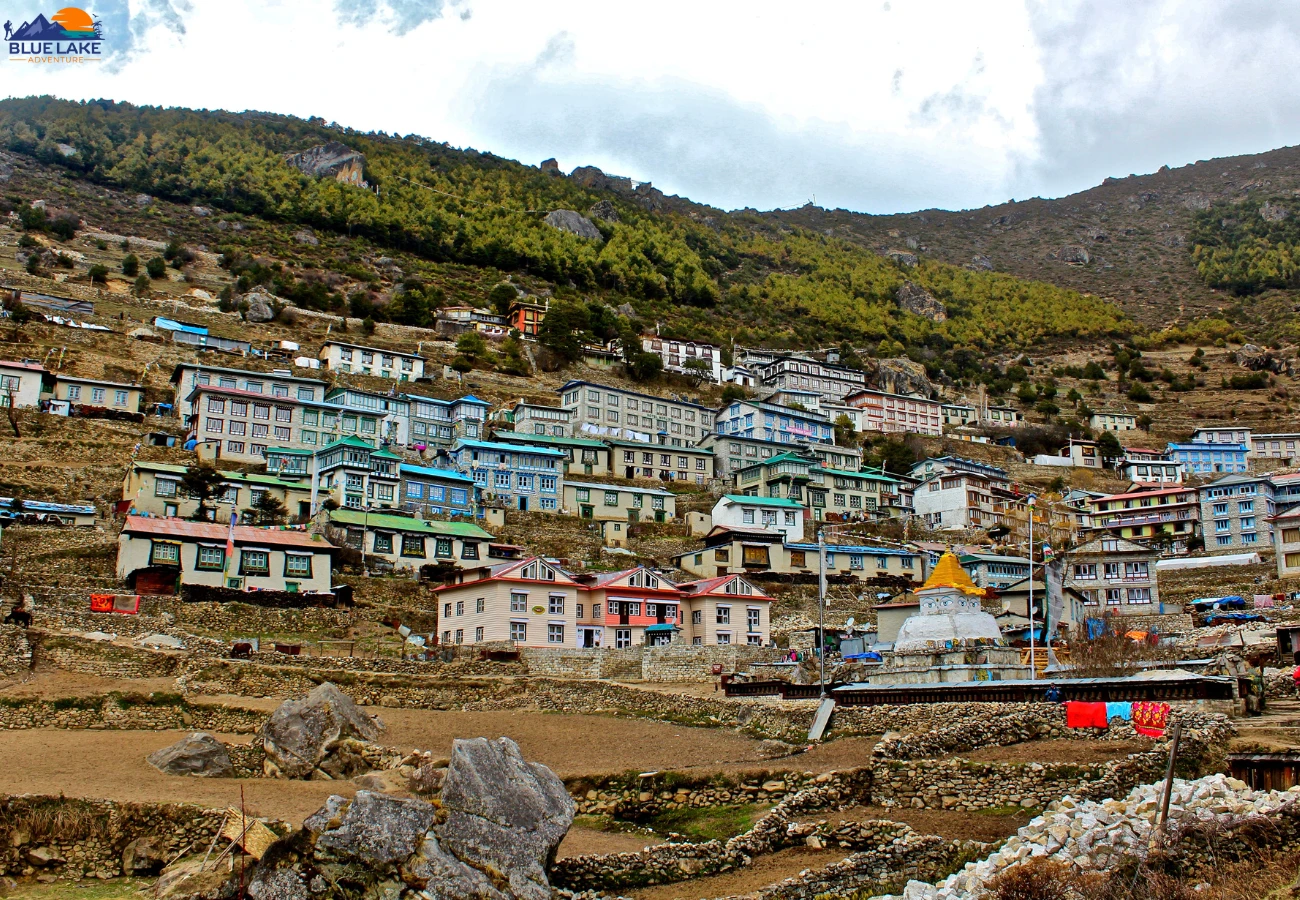
To avoid any mountain sickness, plan the itinerary by giving your body a day to rest and acclimatize at a higher altitude.
Find Yourself a Better Trekking Agency
For safety during the trek to Everest Base Camp, choosing a better trekking agency is crucial too. A good trekking agency will provide you with better services like guides, porters, accommodation, and less risky routes.
Because it is crucial to choose a better trekking agency, you can always rely on Blue Lake Adventure. With a better trekking agency, you can ensure your safety even in emergency situations. From your basic needs to making you cautious about risk factors, a better trekking agency is important.
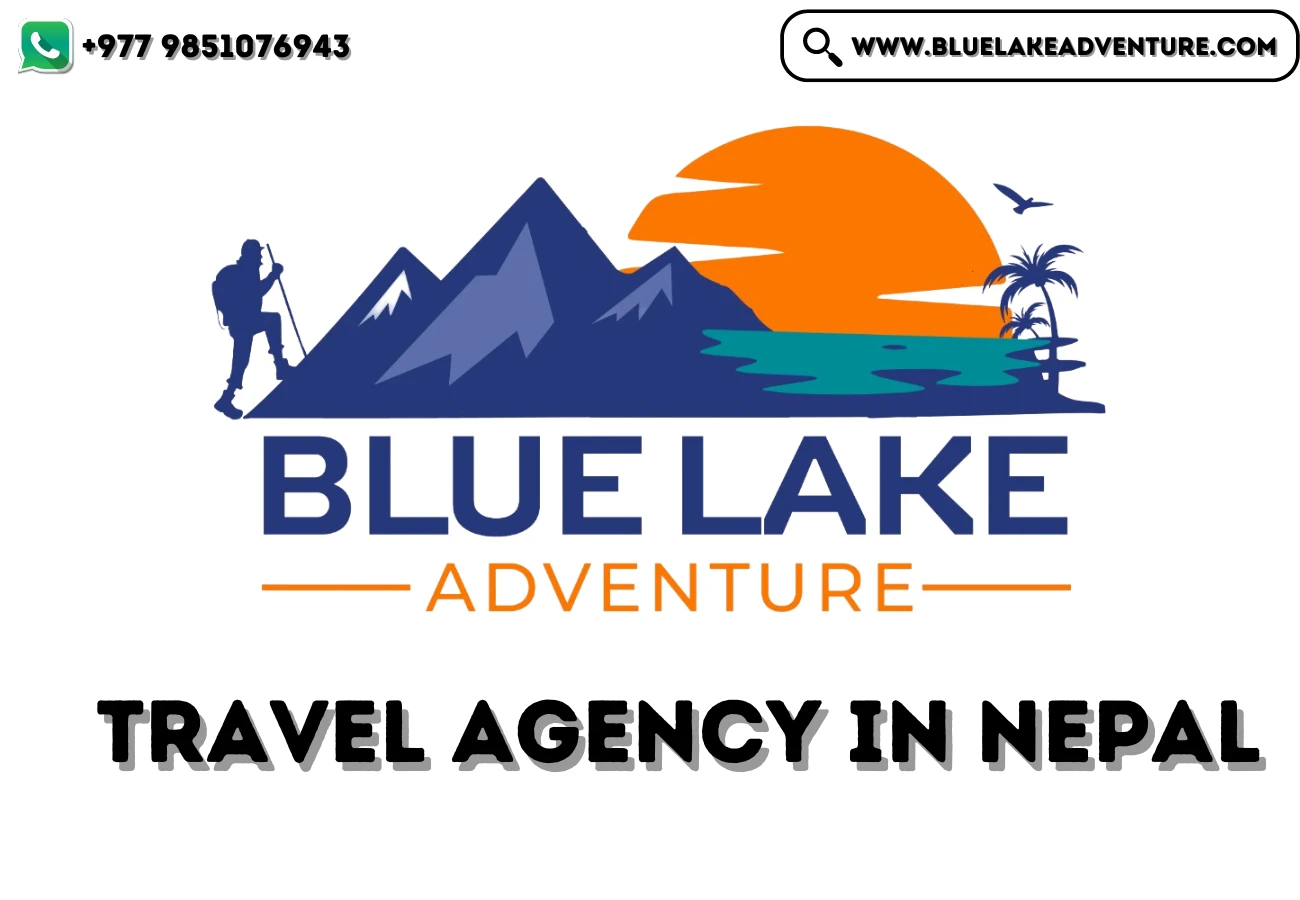
You can identify better trekking agencies by looking at their past successful rates, contacting them, and checking reviews on the website and TripAdvisor. Moreover, you can check out their social handles too, where many trekkers often share their experiences while trekking with their respective agencies.
A trekking agency with good connections and teams of guides, porters, and advisors is often good and ideal as a trekking company. Get your package booked with the agency of your choice and prepare to trek for some of the most thrilling experiences of your life.
Taking care of the Health
While trekking at high altitudes, it is crucial to take care of every aspect of health like hydration, warmth, frostbite, etc. It is important to consider even a minor health problem during trekking in the Himalayan region.
To avoid any serious cases, you need to prioritize your health more than continuing the trek. Maintain your hydration and nutrition levels so that you can keep hiking through the rough ridges and snow-covered trails.
In order to maintain hydration, carry extra water bottles filled with warm water. Also, consume nutritious foods throughout your journey. You can have Daal Bhaat in the tea houses to maintain your nutritional level.
It is necessary to have better health, so if you even find a minor difficulty, say it to the guide you are trekking with. Also, carry some snack bars with you so that you can have them whenever you feel your energy level is low.
Avoid Heavy Backpack
Having a lightweight back is important when walking through the trails. They will make you more comfortable while walking through the steep trails, narrow pathways, and uphill. It is necessary to avoid things that are not important during the trek and carry only the most important things in your backpack.
Avoid over-stuffing the things in your pack that are not necessarily important during the Everest Base Camp Trek.
Prioritize your comfort more than the goods in your backpack. Whether you are a beginner in trekking or skilled, carrying a light backpack is always important.
Without a load, you can easily continue your trekking journey by matching the footsteps of other companions. Being a beginner in trekking, you need to focus on hiking freely without worrying about anything including the load of the backpack.
Even if you have to carry more, put those in a separate backpack other than what you are carrying. Hand it to your trekking companion or porters so that you don’t have to carry all the stuff by yourself.
Get Prepared for Altitude Sickness and Weather Conditions
Altitude sickness is one of the more serious conditions at high altitudes. Anyone can suffer from altitude sickness if they are not used to high altitudes. Since it’s going to be your first trekking experience at Everest Base Camp, you need to be fully prepared for altitude sickness.
The symptoms of altitude sickness include headaches, vomiting, nausea, and difficulty breathing. During the trek, if you ever face any kind of the above problem, you need to get it said to the guides trekking with you. If you face any symptoms of altitude sickness, then you have to descend immediately.
Sudden changes in weather conditions are also one of the major problems in the Himalayan region. You can’t predict the weather in the Himalayan region because it often undergoes unusual changes.
While trekking, if you get any idea about changing weather, you need to find proper accommodation and prepare to warm up your body to avoid any hypothermia.
With experienced trekking agencies, you can get a better companion during the trek who will make emergency plans if any kind of symbol of changing weather is observed.
Necessary Mountain Health Kits
Having a health kit is always important during the trek to treat normal injuries or problems. While trekking, accidents and injuries like cuts, blisters, sprains, or minor illnesses can occur. With a health kit, you can provide immediate first aid to yourself or others in your group.
Applying first aid kits to normal injuries can prevent further complications and infections.
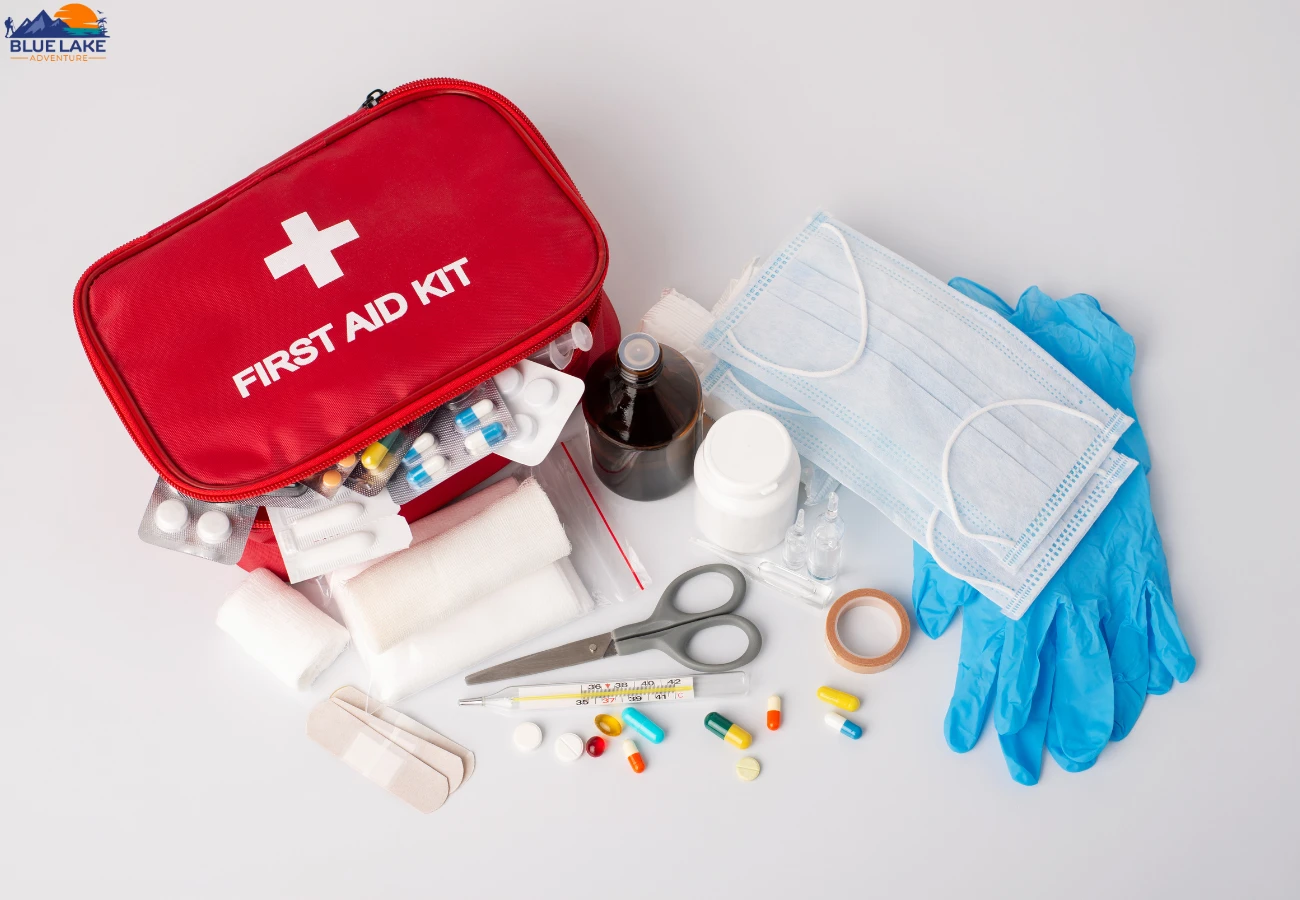
Inside your health kit, carry different medications, including pain relievers, anti-inflammatory drugs, and anti-diarrheal medications. These medications are important for managing common discomfort during the trek.
For curing the wounds and cuts, take some antiseptic solutions, bandages, adhesive tape, and blister pads. If you get any cuts during the Everest Base Camp Trek, these medications are necessary to avoid any infections in the wound.
Also, if you have any pre-existing medical conditions, you need to carry the necessary medications because it is hard to find proper medications during the Everest Base Camp. In addition, if you have any allergies or reactions to certain foods or insects, then carry the necessary medication to avoid such allergies.
Facts about Everest Base Camp
Before embarking on the journey of trekking to Everest Base Camp, you need to know more about Everest Base Camp, like the accommodation, difficulties, permits, and many more.
As you are a beginner in trekking to Everest Base Camp, we will try to cover every single detail important to you before trekking to EBC.
| Facts about Everest Base Camp Trek for Beginners | |
| Location | Khumbu region of Nepal |
| Highest Altitude | Kala Patthar at 5,644m elevation (18,514 ft) |
| Level of Difficulty | Moderate to Challenging |
| Mode of Accommodation | Teahouses, few lodges |
| Starting Point | Lukla |
| Ending Point | Lukla |
| Passes of Trail | Sagarmatha National Park, Tengboche Monastery |
| The best time for EBC Trek | Autumn (September to November) and Spring (March to May) |
| Group Size | 1-20 |
| Major Towns | Lukla, Phakding, Namche Bazaar, Tengboche, Dingboche, Lobuche, Gorakshep, and Everest Base Camp |
| Food Items | Dal Bhat, Momos (Nepali Dumplings), Thukpa, Sherpa stew, Raksi, Tea, Coffee, etc. |
Everest Base Camp Trek Itinerary
Here is an overview of the Everest Base Camp itinerary, so as a beginner, you can understand the route you will go through.
Day 01: Arrive in Kathmandu, Nepal
Upon your arrival, one of our company representatives will pick you up from the airport and take you to the Hotel for some rest. On the same day, you will complete some formalities in the office and prepare physically and mentally to embark on the Everest Base Camp Trek the next day.
Day 02: Fly from Kathmandu to Lukla and trek to Phakding
On day 2, you will have a scenic flight of approximately 45 minutes to Lukla. You will have an exciting flight to Lukla, and on reaching Lukla, you will trek to Phakding for about 3 hours.
Day 03: Trek from Phakding to Namche Bazaar (3,440m/11,286 ft)
Early in the morning, after having breakfast in Phakding, you will trek to Namche Bazaar, the gateway to Mt. Everest. The trek will last for almost 6 hours, and after reaching Namche Bazaar, you will have to adjust your body to the high altitude.
Day 04: Acclimatization at Namche Bazaar
As acclimatization is important to every trekker, especially beginners, our fourth day will be at Namche Bazaar. On this day, we will hike to the Everest View Hotel, which is a hotel holding the Guinness World Record for being a hotel at the highest altitude of 3,962m.
From Everest View Hotel, you can have views of some of the majestic peaks like Mt. Everest (8,848.86m), Lhotse (8,516m), Nuptse (7,861m), Makalu (8,485m), Ama Dablam (6,812m), etc.
Day 05: Trek to Tengboche (3,860m/12,664ft)
After spending an acclimatization day in Namche Bazaar, exploring the local markets and Sherpa community, you will trek to Tengboche. Tengboche has the largest monastery, Tengboche Monastery, where you will explore more about Buddhist history.
Day 06: Trek to Dingboche from Tengboche (4,410m/14,433ft)
On this day, we will trek to Dingboche from Tengboche which takes around 6 hours.
Day 07: Acclimatization at Dingboche
Dingboche is at a height of 4,410 m, which is high for beginners to endure during the trek. So in order to adapt to the higher altitude, we will have an acclimatization day in Dingboche. You will have your stay at Nagarjuna Hill, which is at an elevation of 5,000m. From there, you can enjoy the panoramic view of Mt. Makalu and neighboring peaks.
Day 08: Hike to Lobuche for almost 6 hours
On day 8 of the trek, you will trek to Lobuche, which is at an elevation of 4,930 m/16,170 ft.
Day 09: Trek to Gorak Shep and then to Everest Base Camp
After enjoying a delicious breakfast at Lobuche, we will head to the Gorak Sherp which is at an elevation of 5,164m. It takes around 2–3 hours to reach Gorak Shep from Lobuche.
After reaching Gorak Shep, we will take a quick lunch and hike to Everest Base Camp.
Day 10: Hiking down to Pheriche from Gorak Shep
On day 10 of the trek, we will hike to Kala Pathhar from Gorak Shep, which is surrounded by different Himalayas. Kala Patthar is located at an altitude of 5,550m and is one of the best viewpoints of Everest and surrounding peaks.
After enjoying the great view of the Himalayas and sunrise in Kala Patthar, we will trail back to Gorak Shep. We will then trek to Pheriche after having breakfast in Gorak Shep to have an overnight in Pheriche.
Day 11: Trek to Namche Bazaar from Pheriche (approx. 7 hours)
Today, we will descend back to Namche Bazaar, where we started our trek to Everest Region. With an approximate 7-hour hike, you will reach Namche Bazaar, where you can spend some valuable time exploring the markets and enjoying local coffees.
Also, hot showers are available so you can take advantage of them if you prefer.
Day 12: Hike down to Lukla from Namche Bazaar (approx. 7 hours)
After enjoying valuable time in Namche Bazaar, we will head back to Lukla, where we started our trekking in the Khumbu region of Nepal.
Day 13: Fly back to Kathmandu (almost 45 minutes)
Early in the morning, looking at the weather, we will take a flight to Kathmandu, which will take around 45 minutes. While on the flight, you can experience some delightful aerial views. After reaching Kathmandu, we can go sightseeing at some nearby UNESCO World Heritage Sites and explore the Thamel area.
Day 14: Departure
We will say farewell to you and your groups so you can safely fly back to your home country. We drop you off at the airport and hope to see you back again.
Everest Base Camp Trek Cost
The cost of the Everest Base Camp Trek can vary widely depending on a number of factors, including the time of travel, and services you want. Different travel agencies in Nepal can manage trekking costs for Everest Base Camp.
Generally, the cost for Everest Base Camp Trek is $1250 which is charged normally by different travel agencies.
Also, you can minimize the cost by joining a group or customizing your itinerary to make it short.
During the peak seasons of trekking, the cost is usually higher so get your booking from a better travel agency to enjoy every service. Without permits, and tickets the trekking to Everest Base Camp costs $20-$40 per day.
Difficulties in Everest Base Camp Trek
In general, trekking to Everest Base Camp is a moderate level of difficulty. But considering the climate of the Everest region, the trek can go up to a challenging level. It is difficult to predict the changes in weather in the Himalayan region and of which the trek can be challenging.
Skilled trekkers have ideas about the Everest region of Nepal, but it can be quite challenging for beginners trekking to Everest Base Camp.
Why is it difficult for beginners to trek in Everest Base Camp? For beginners, it is quite difficult to trek to Everest Base Camp because it includes hiking for several hours at higher altitudes. Since beginners are not used to trekking at higher altitudes, the time of trekking and altitude together can be challenging.
The steep and slippery trails make the trekking complicated too. Since beginners are not used to trekking, they generally miss out on the thought that the trails can be slippery too. Due to this, several accidents can occur which may lead to fatal injuries.
However, there are several difficulties that may occur if you are not cautious about the trails. But, with better guides, physical fitness along with mental fitness you can have this trek without running into difficulties.
Permit Fees in EBC Trek
While trekking to Everest Base Camp, paying permit fees is important as it is a part of the rules and collection of Trekker’s information. The permits that need to be paid during the Everest Base Camp Trek are:
Trekker’s Information Management System (TIMS) Card
TIMS Card is a mandatory permit for all trekkers in Nepal. It costs NPR 2,000 (US $17) for foreigners and NPR 500 (US $4) for SAARC Nationals. To get a TIMS card, you can visit Nepal Tourism Board (NTB) in Kathmandu.
Sagarmatha National Park Entry Permit
This permit is necessary to have entry into the Sagarmatha National Park, which is home to Mt. Everest. It costs NPR 3000 (US $28) for foreigners and NPR 1500 (US $15) for SAARC Nationals.
You can get the Sagarmatha National Park Entry Permit from the NTB office in Kathmandu or from the park entrance gate in Monjo.
Khumbu Rural Municipality Permit
This permit allows you to enter the Khumbu Rural Municipality, which is the area where Everest Base Camp is located. It costs NPR 2000 (US $17) for foreigners and NPR 500 (US $4) for SAARC Nationals.
You can get the Khumbu Rural Municipality Permit from the NTB office in Kathmandu or from the municipality office in Lukla.
Best time to have Everest Base Camp Trek
Everest Base Camp Trek comes at a moderate level of difficulty, so time should be considered before embarking on the journey to EBC. The best time to have Everest Base Camp Trek is during spring (March to May) and autumn (September to November).
During these seasons, the weather conditions are at their best offering clearer skies and moderate temperatures. With clear skies, you can have stunning views of mountain peaks and sunrises at their best. Waking up in the morning and getting a clear view of mountain peaks at sunrise because of the clear sky is a joyous moment for every trekker.
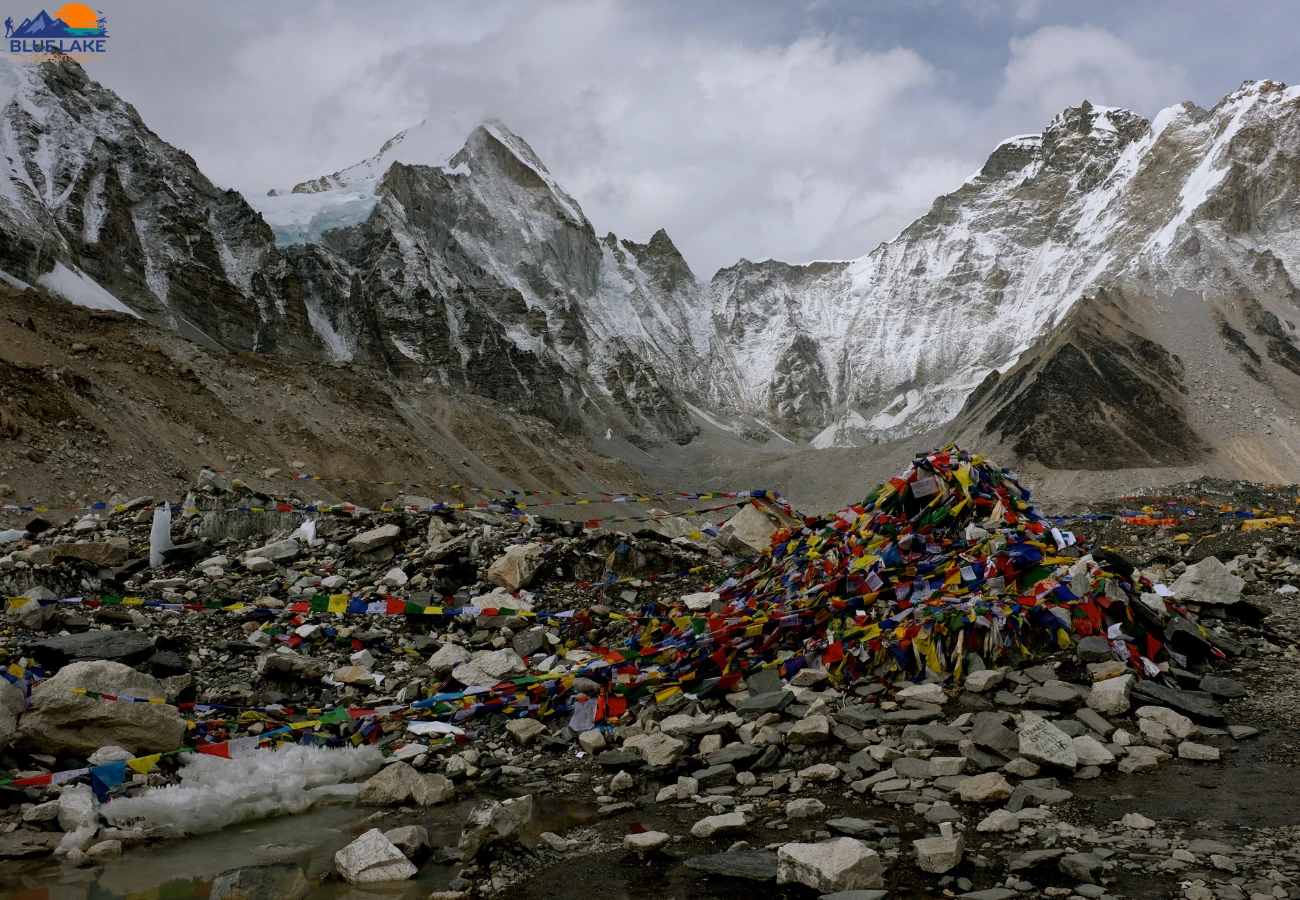
Especially for beginners, these seasons are best for exploring unexplored parts of Nepal.
Everest Base Camp Trek is possible throughout the year but every season won’t provide the best experience of trekking in Everest Region. While the monsoon season is often wet and cloudy, making it difficult to have a clear view of mountains. Also, with higher precipitation, the rainfall is more likely to occur which brings difficulty for trekkers, especially for beginners.
Furthermore, the winter season is very cold making it difficult for beginners trekking in Everest Base Camp. Trekking can be done if you are well prepared against extreme cold situations.
Services and Accommodation in EBC Trek
Accommodation
For accommodation, you have several options but teahouses are popular choices for different trekkers. Teahouses have cozy rooms with mostly shared bathrooms. The cost of accommodation in teahouses varies depending on the location and quality.
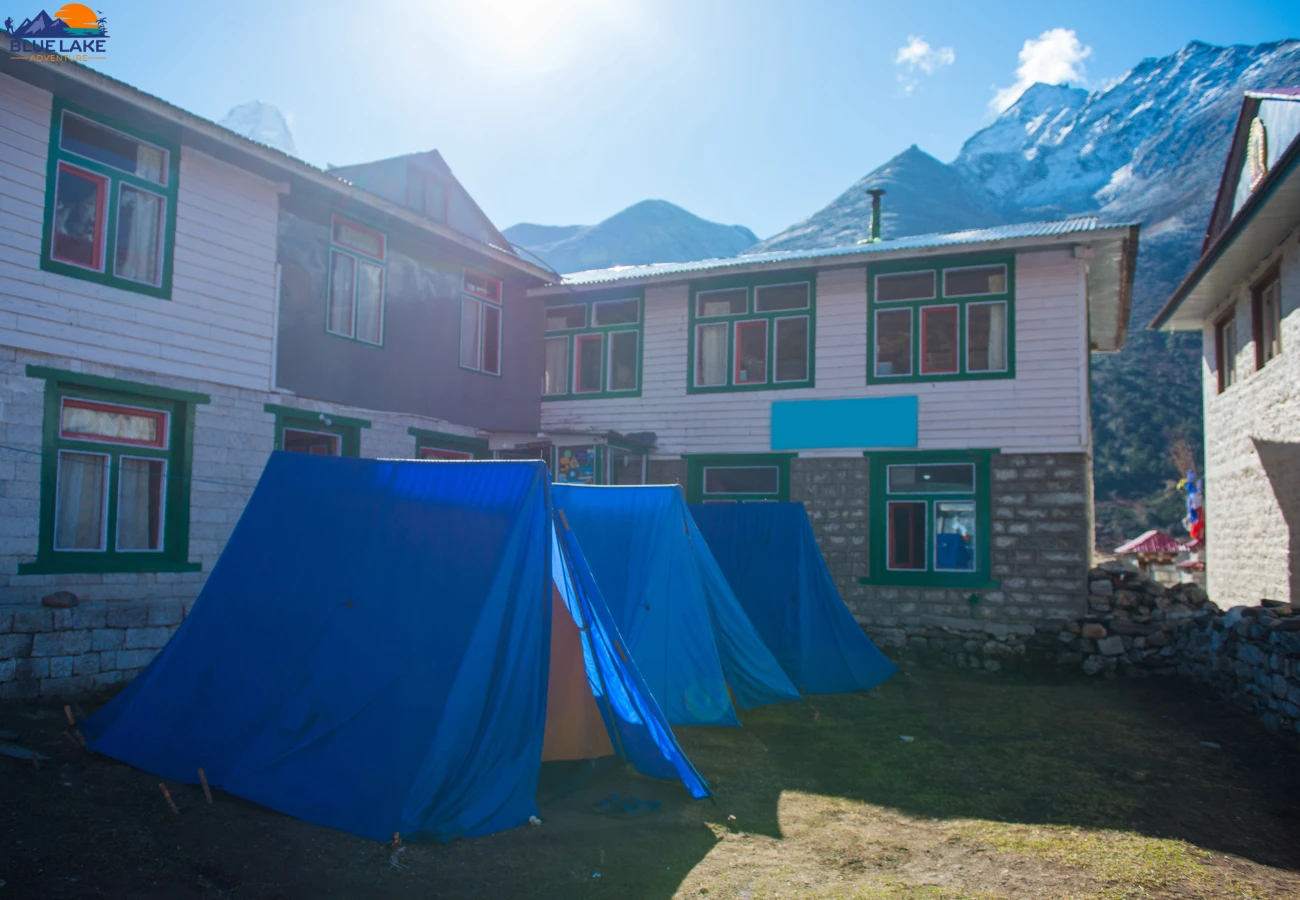
Other than teahouses, those who want to experience more of the Everest region can have a camp too. With fun, risks come too. Camping in the Everest region can be challenging because of extreme cold and weather instability. If you want to enjoy camping, make sure to have the proper equipment, and tents to prevent extreme cold and weather changes.
Food
During the trek, you will have three meals a day which will typically consist of local Nepali dishes. Mostly, you will enjoy delicious Nepali cuisine like Dal Bhaat for dinner. Also, you will have momos (Nepali dumplings) and thukpa in different hotels on the trail to EBC.
For breakfast, you will have tea/coffee as of your preference with locally available breakfasts like sel roti, cookies, etc.
Internet
Internet is somewhere limited along the trail, so you will have limited access. Some teahouses have Wi-Fi facilities but because of the altitude, they are often slow and unreliable.
Guides and Porters
You can have different guides and porters who have been trekking through the trails of the Everest Region for many years. They are well-known for the routes, terrain, and climate and are also valuable for communicating with the local people around.
While trekking with the local guides and porters, you can get insights into the rich cultures and traditions of the Everest region. Because of their experiences in guiding the region, they are more familiar with the localities, cultures, and people. With this, you can even explore more of the Everest region by communicating with the locals with the help of guides.
Moreover, getting local guides and porters supports the local economy, which will help them run their daily lives. They are continuously involved in guiding, so their daily life is dependent on the occupation. If you can, then hire a local guide and porter to support their daily lives.
Medical care and Local Assistance
Having better medical care is important because the terrains of the Everest region are unusual and can lead to different accidents that need medical care. For medical services, there are only a few clinics on the trail. So, the medical support is limited.
For any minor accidents, local assistance can help you a lot. They can help you by providing shelter to rest until proper medications are provided. Other than basic medical services, emergency rescue is needed for serious accidents.
Also, communication is important because mobile phones don’t work properly with the network. The high altitude blocks the network so having a walky-talky is important to communicate with other companions during the trek.
Packing List for Everest Base Camp Trek
While trekking to Everest Base Camp Trek, a better packing list and gear are most. Here are some recommendations by experienced guides for beginner’s packing lists.
Clothing
- Base layers (moisture-absorbing and quick-drying)
- Insulating layers (fleece jackets, down jackets)
- Waterproof and windproof outer shell jacket
- Hiking pants
- Thermal underwear
- T-shirts and long-sleeved shirts
- Warm hat or beanie
- Gloves (Thermal and waterproof)
- Hiking socks (wool/synthetic)
- Warm and comfortable hiking boots
- Sunglasses with UV protection
- Sun hat or cap
Equipment
- Backpack (40-50 liters)
- Sleeping bag
- Trekking poles
- Headlamp or flashlight with extra batteries
- Water bottles
- Water purification tablets
- Waterproof bag
- Dry bags
- Trekking mag or guidebook
- Portable charger
- Compass
Personal Items
- Toiletries (toothbrush, toothpaste, soap, hand sanitizer, etc.)
- Quick-drying towel
- Sunscreen with high SPF
- Lip balm
- First aid kits
- Wet wipes
- Snacks and energy bars
- Cash (Nepalese rupees) and small change
- Passport and necessary permits
- Camera or smartphone
- Copy of necessary documents
- Adapter plug
Additional (optional)
- Neck gaiter or scarf
- Lightweight rain cover for backpack
- Multi-tool or a pocket knife
- Extra shoe laces
Final Say on Everest Base Camp Trek for Beginners
Trekking to EBC can go from moderate to challenging because of unusual changes in weather, steep trails, terrains, etc. So, as a beginner, you need to understand the geography of the Everest region through any means available.
If you are not confident about trekking to Everest Base Camp then look for suggestions from the trekkers who have already been to EBC. Or, reach out to us so you can provide better suggestions about trekking.
And, if you are ready to trek to Everest Base Camp trek, follow up our 8 Tips for Everest Base Camp Trek for beginners.
Be mentally prepared, get into physical fitness and we will meet you at Tribhuvan Airport to pick you up for the best thrilling experience of your life.



